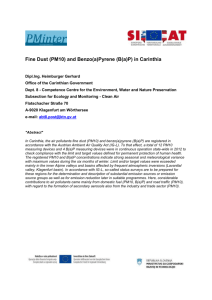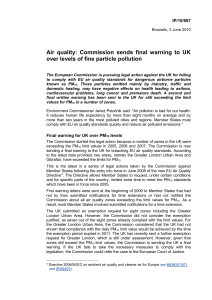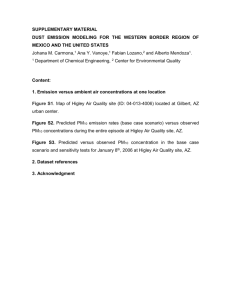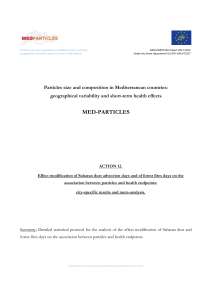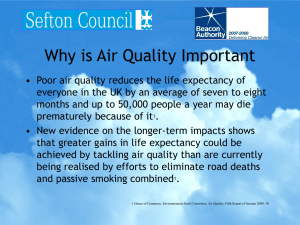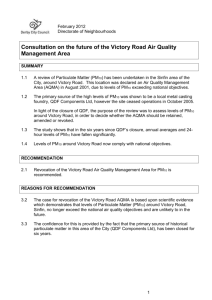The effect of reduced ammonia and reduced nitrogen
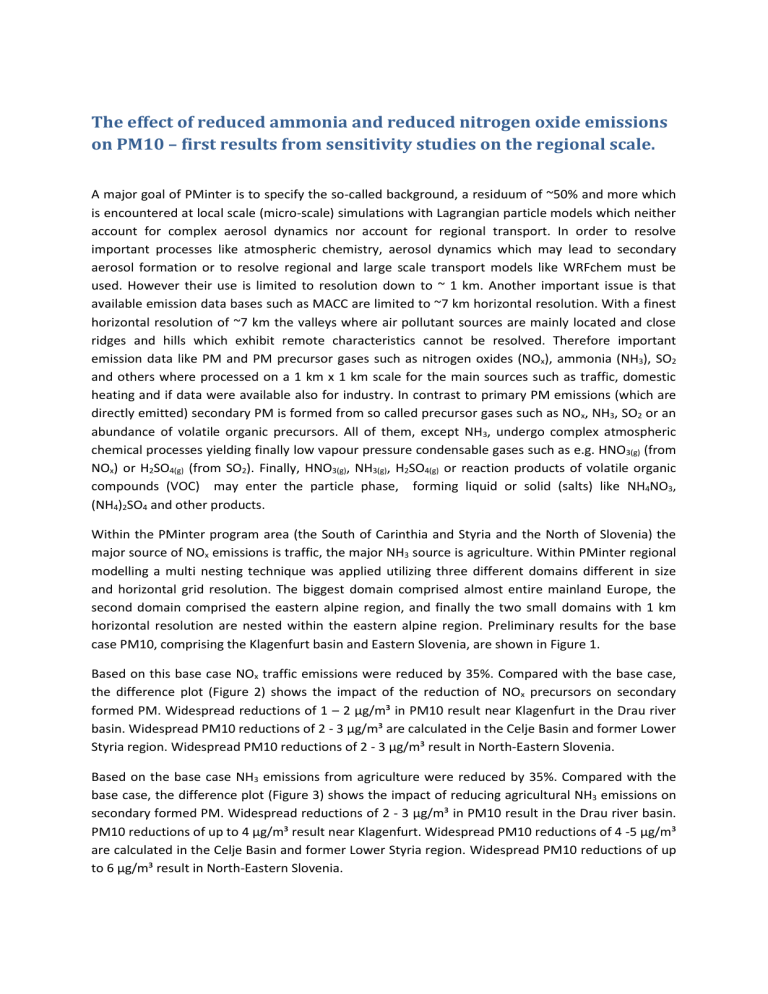
The effect of reduced ammonia and reduced nitrogen oxide emissions on PM10 – first results from sensitivity studies on the regional scale.
A major goal of PMinter is to specify the so-called background, a residuum of ~50% and more which is encountered at local scale (micro-scale) simulations with Lagrangian particle models which neither account for complex aerosol dynamics nor account for regional transport. In order to resolve important processes like atmospheric chemistry, aerosol dynamics which may lead to secondary aerosol formation or to resolve regional and large scale transport models like WRFchem must be used. However their use is limited to resolution down to ~ 1 km. Another important issue is that available emission data bases such as MACC are limited to ~7 km horizontal resolution. With a finest horizontal resolution of ~7 km the valleys where air pollutant sources are mainly located and close ridges and hills which exhibit remote characteristics cannot be resolved. Therefore important emission data like PM and PM precursor gases such as nitrogen oxides (NO x
), ammonia (NH
3
), SO
2 and others where processed on a 1 km x 1 km scale for the main sources such as traffic, domestic heating and if data were available also for industry. In contrast to primary PM emissions (which are directly emitted) secondary PM is formed from so called precursor gases such as NO x
, NH
3
, SO
2
or an abundance of volatile organic precursors. All of them, except NH
3
, undergo complex atmospheric chemical processes yielding finally low vapour pressure condensable gases such as e.g. HNO
3(g)
(from
NO x
) or H
2
SO
4(g)
(from SO
2
). Finally, HNO
3(g)
, NH
3(g)
, H
2
SO
4(g)
or reaction products of volatile organic compounds (VOC) may enter the particle phase, forming liquid or solid (salts) like NH
4
NO
3
,
(NH
4
)
2
SO
4
and other products.
Within the PMinter program area (the South of Carinthia and Styria and the North of Slovenia) the major source of NO x
emissions is traffic, the major NH
3
source is agriculture. Within PMinter regional modelling a multi nesting technique was applied utilizing three different domains different in size and horizontal grid resolution. The biggest domain comprised almost entire mainland Europe, the second domain comprised the eastern alpine region, and finally the two small domains with 1 km horizontal resolution are nested within the eastern alpine region. Preliminary results for the base case PM10, comprising the Klagenfurt basin and Eastern Slovenia, are shown in Figure 1.
Based on this base case NO x
traffic emissions were reduced by 35%. Compared with the base case, the difference plot (Figure 2) shows the impact of the reduction of NO x
precursors on secondary formed PM. Widespread reductions of 1 – 2 µg/m³ in PM10 result near Klagenfurt in the Drau river basin. Widespread PM10 reductions of 2 - 3 µg/m³ are calculated in the Celje Basin and former Lower
Styria region. Widespread PM10 reductions of 2 - 3 µg/m³ result in North-Eastern Slovenia.
Based on the base case NH
3
emissions from agriculture were reduced by 35%. Compared with the base case, the difference plot (Figure 3) shows the impact of reducing agricultural NH
3
emissions on secondary formed PM. Widespread reductions of 2 - 3 µg/m³ in PM10 result in the Drau river basin.
PM10 reductions of up to 4 µg/m³ result near Klagenfurt. Widespread PM10 reductions of 4 -5 µg/m³ are calculated in the Celje Basin and former Lower Styria region. Widespread PM10 reductions of up to 6 µg/m³ result in North-Eastern Slovenia.
Fig. 1: Monthly average PM10 for January 2010 base case for the area of the third nesting step (1 km horizontal resolution).
Fig. 2: Difference plot PM10 base case – 35% NO x
reduction scenario. Monthly averaged PM10
January 2010 difference for the area of the third nesting step (1 km horizontal resolution).
Fig. 3: Difference plot PM10 base case - 35% NH
3
reduction scenario. Monthly averaged PM10
January 2010 difference for the area of the third nesting step (1 km horizontal resolution).
